Attila Rides Out

Attila Rides Out
By Peter Stewart, Writer, Total War
The sprawling, bloated tenement of the Western Roman Empire stands on the brink of total collapse. Straining under the weight of its own decadent, corrupted mass, and grown complacent and vulnerable over long centuries of imperial mismanagement, it is slowly pecked apart by enemies innumerable.
Their world is over.
A great chill descends upon the world. The nomads of the eastern European steppes, unable to maintain a life in the rapidly freezing climate, push frantically into western and southern Europe. The Germanic barbarians of the east, unable to contend with this relentless push, also begin to move further into Western Europe and northern Italy, pressing further on the beleaguered Romans. The long winter is upon them, and the stark reality of desperate survival settles in as surely as the frost.
Their world is over.
Moving from the European steppes, at the nexus of this blossoming chaos, comes Attila. With the countless horde of the Huns at his back, and with the lust for death and destruction in his veins, he rides out into Europe, pillaging and raiding as he does, driving the steppe nomads before him. Those who cannot flee are destroyed. Those who do not join him are destroyed. To his south, the stable but fragile Eastern Roman empire looks on with concern; the walls of Constantinople stand strong, but the rest of their hard-fought empire is vulnerable to the marauding Huns.
Their world is over.
Attila is the scourge of God, born to bring fire and death down on the old world. Those who do not bow before him, those who do not proffer him gold and tribute, are swept away in hellish fire. Those who do placate him do so only temporarily. There is no salvation, there is no saviour. There is only Attila, atop his steed, with the Hunnic horde at his back, and he will see civilisation burn.
This world is over.
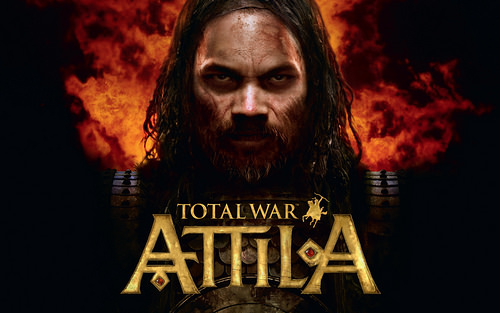
Total War: Attila™, announced! Unleashed, if you will, upon a world not ready to face him. Much like I am now unleashed upon a readership not ready to face me. Hello! I’m Pete (Or CA Pete, if you like), and I’ll be bringing you these periodic blog updates as the development of Total War: Attila™ rides ceaselessly, like the eponymous warrior himself, towards release.
Attila is the first Total War title to be what we here at CA are referring to as ‘Survival Strategy’. If you’re a little puddled as to what that means, picture it; Total War is typically the war of nation against nation in a varyingly fair, but ultimately even, dignified fashion.
Attila is not fair. It is not reasonable. There are no pretty pitched battles against the Hunnic Empire. Attila is coming, and he will reach you, and you will have to deal with him. Yet the horde may seem endless, and certainly when possible they will push on you and strain you to your very limits. The real question is how will you survive against the Hunnic multitudes? Or indeed, how long? Well, there are many ways you may survive against Attila in the game, and many new and old gameplay features besides to aid you in your struggle, in ways both familiar to staunch Total War players, yet also in ways that may surprise even the most stalwart of you.
But with the announcement of the impending apocalypse, I thought it only appropriate to focus this inaugural blog on the fire and destruction that can and will be wrought across the world, both on the campaign and in battle.
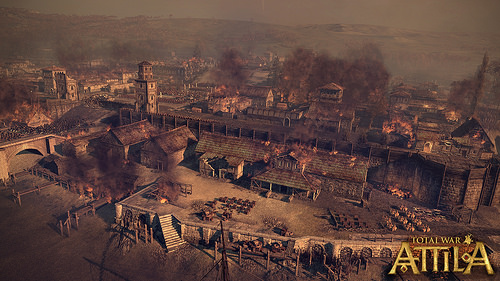
Fire is nothing new to Total War, or indeed war in general. Yet in Attila, fire is a little more … alive than in previous Total War incarnations. The fire is a contagion, and will spread across anything it touches, meaning that a settlement can go from one burning shed to a citywide inferno in a shockingly short amount of time.
You may remember something similar occurred in Shogun 2 during the Historical Battle of the 3rd Siege of Nagashima. However, freed from the confines of the historical scenario, we have brought this dynamic fire into every battle in Attila. We’ll focus in on siege battles for now, as that’s where the bulk of fire’s true effect can be demonstrated.
As seen above, the fire will spread to consume as much as it can. Fires can be present from the very beginning of the fight (more on that later), or can be started by flaming arrows or artillery shots. Buildings will burn, but so too will foliage. If you wish to see if an army is hiding in that nearby forest, do the sensible thing and burn the entire forest down.
Because remember – only YOU can prevent forest fires. Except you actually can’t.
When there’s just a little bit of fire, your men won’t be too affected, but as the conflagration begins to spread, the morale of your army will begin to suffer more and more. If the fire manages to rage across the entire city, you may find it difficult to control your forces, as the urge to avoid charring increases.
The rationale here is logical – fire is scary. It is a horrible way to die, and perhaps an even more horrible thing to survive. Defending your home is courageous, but what is a man to think when he sees his home engulfed in flames? Even the most stalwart man would lose heart, and so perhaps lose his nerve. When your home is destroyed, why sacrifice your life in vain?
So that’s what fire can do for you, and the battle-based shenanigans that can cause fire. But there is another way for the flames to spread, and that’s a new game mechanic called Siege Escalation!
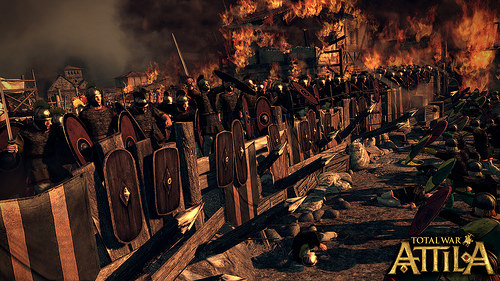
Siege Escalation follows the logic of how an actual siege would progress, and helps to connect the Campaign gameplay and Battles in a more meaningful way. Put simply; the longer a siege continues without a battle on the campaign map, the more that the settlement itself will be destroyed when you finally get to pitched combat. Whilst you’re not actively battling during a siege, your siege weapons and sappers will still be weakening settlement over time, and the defenders will slowly be worn away and fail to maintain their defences. Walls will crumble, exposing weak points; houses will collapse and, in some cases, catch fire (as alluded to earlier).
At first, the damage will be minimal or manageable at worst, but as the siege goes on without ending, you may begin to notice more … profound disadvantages as a defender:
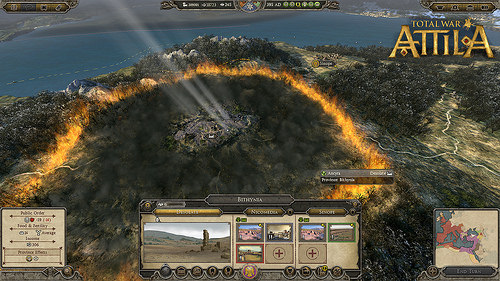
The destruction of the city, much like fire effects, will have differing results on your forces: nobody likes to defend something that’s already destroyed. Their morale will take a hit, as will their desire to put up an adequate fight (affecting their attack and defense statistics).
As a final note, it’s worth mentioning that the damage done to your buildings in the settlement on the battle map will bear itself out on the campaign map, and likewise any damage done to your settlement on the campaign map (be it through Agent action or otherwise) will have an effect on the settlement in battle.
Siege Escalation, fire and a sense of damage permanence bring a new dynamic to both Campaign and Battle gameplay, as you now have to decide how long you can leave a siege with no direct attention, and whether you feel as a defender you can hold out against the enemy, even as your walls crumble, and whether your men will even want to fight for the crumbling husk of a city you have left for them.
And finally, my favourite new fire-based feature of Attila…
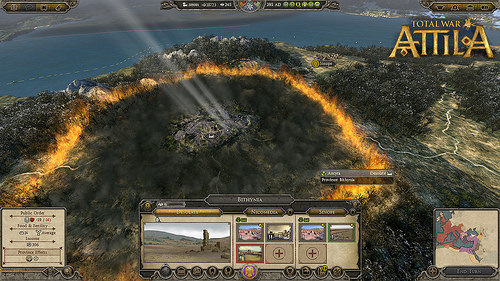
This is the Scorched Earth policy that Attila brings to Total War. A new feature for Total War, this ‘Raze’ option is designed to entirely obliterate a region (not a province), destroying all of the buildings and reducing the entire settlement to a smoking pile of rubble. This isn’t just a notion we added for fun (although, genuinely it is – look at that praxis wave!), but rather a pragmatic tool in your arsenal against your advancing enemies:
Playing as the crumbling Western Roman Empire, Total War: Attila places you, almost from the very start, in situations where you will have to make difficult judgement calls. You will find yourself outmanned and overpowered in several places. The key to your victory may very well lie in the consolidation of your forces and, unfortunately, the abandonment of certain settlements to approaching foes.
But why should they have the satisfaction of taking that settlement from you and gaining all its wealth, with only a battered castle or a burned tavern to show for their barbarous efforts. If you can’t have it, NOBODY CAN!
Burning a settlement does more than just eradicate it. For you as a player, you will strip the city of any valuables you can find before retreating, giving you a sizeable chunk of money to ease the blow of destruction, making your desperate retreat at least somewhat financially viable.
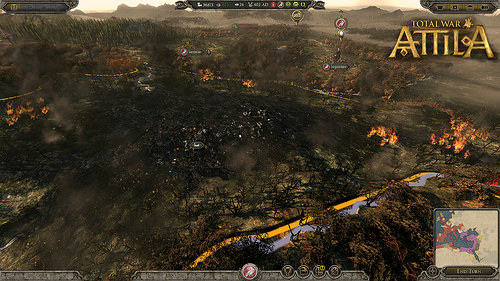
I cannot stress enough the totality of destroying a settlement. It will be eradicated in almost its entirety. If the invading enemy wants to make this settlement worth living in again, they will have to spend an extraordinary amount of money, and take many, many turns recolonizing the region, building a new settlement and making the land arable again.
Recolonising a settlement isn’t as simple as just plopping back into town, dropping a stack of cash and building a farm, however. Whosoever reclaims the city will lose half of every unit in the army as volunteers for repopulation. This may be offset by replenishment, but in a land that’s been burned to the ground, the local speciality is ‘burned mud soup with a side of charred family member’, so replenishment may happen at a glacial pace. Further to that, no flourishing local economy will also hamper progress, meaning that any army recolonising will face an uphill struggle in terms of civil administration and military prowess.
If you intend to take the settlement back at one point in the future (and of course you should), there is wisdom in letting your enemy spend their money and their manpower revitalising the place, then sweeping in yourself and reclaiming it (before, of course, they can burn it down themselves!).
Failing that, you can continue to fall back, incinerating towns and villages all the way back to your capital city, where you can man the walls, prepare the barricades and make your final stand and rage, rage against the dying of the light.
And of course, you can also raze enemy cities as you expand across the map…
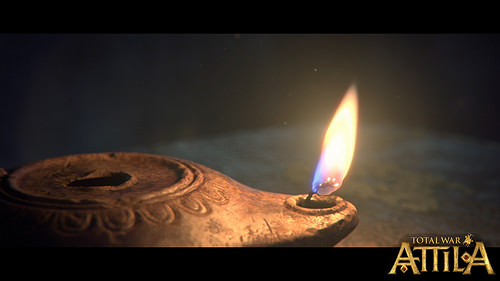
I’ll have more information for you soon. In the meantime, why not watch the trailer again, and gird yourself for judgement day!
Cheers!
CA_Pete